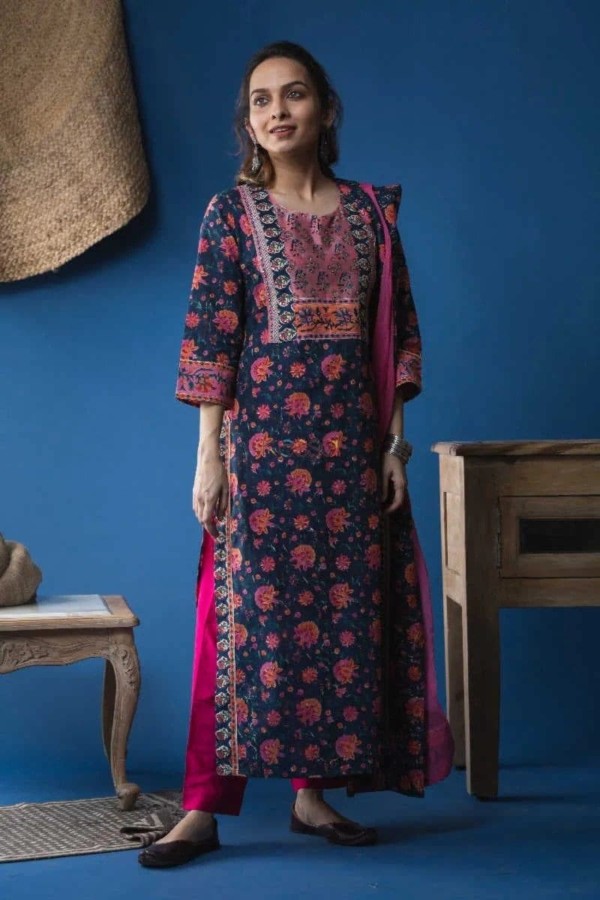From the City of Nawabs, Kababs and Tehzeeb come the opulent craft of Mukaish. Traditionally, wires of gold and silver were thinned out to reach the pliability of thread. The resulting zari was used dexterously to embroider exquisitely over the plush fabric. Mukaish work was usually used to embellish chikankari outfits meant for the Royals to don during the evening.
Ever since its emergence in the Awadhi region in the 3rd century BC, Mukhaish has been a sought-after craft for Royals to modern designers.
Today, Mukhaish is a lot more accessible for all of us non-royal folks and at a surprisingly reasonable price. However, modern Mukhaish is executed with synthetic zari and features a huge variety of intricate motifs. Mukhaish patterns can now be seen when you buy sarees to when you buy dupatta online India.
The Process
Mukhaish is an art that requires highly dexterous hands, a lot of time and is brought to life in the following three steps –
- Chapayi
The intricate motifs are first drawn on paper. The lines that form the motif are perforated with a pointed pin or needle. The paper is, then, placed over the fabric and a mixture of gum and indigo is used to transfer the design onto the fabric. Stencils and blocks are also used widely to execute this step.
- Takaayi
Stiff wires of metal are heated over the fire and stretched meticulously to give it the pliability of thread. It takes a lot of expertise to achieve the perfect zari that can be used to embroider the design. Oftentimes, there are dedicated craftsmen whose only job is to turn the metal wires into thread-like metallic yarn.
- Ghutayi
This is the last step of the laborious process which comes after the embroidery is finished. The embroidered fabric is rubbed and stretched vigorously with glass bottles or cowrie shells to flatten out lumps & bumps and to bring out the luster of the metallic thread.
The many faces of Mukhaish – Types
- FardikaKaam
Mukhaish was traditionally used only to create dotted patterns on luxe fabric. Fardi literally means “dots”! This basic pattern is the most classic in Mukhaish and the finer the dot the more expensive the fabric.
“Hazarbutti” is a famed pattern where a single piece of fabric features over a thousand Mukhaish dots. Dots often take the form of rings and are called “Tikki”.
- Kamdani
A more modern approach to Mukhaish experiments with a plethora of motifs which can range from intricate paisley to floral patterns.
Caring tips for Mukhaish embroidery
- It is best to dry wash your pieces that feature this exquisite piece of art. Respect craft and show some love to your clothes and it will love you back.
- In case you are ironing your clothes at home, always turn it inside out before ironing. Steaming is always a preferred alternative to ironing.
- Refrain from hanging your Mukhaish pieces in a hanger. The weight of the zari can create tears in the fabric.
- Fold it neatly and wrap it in unbleached paper or cost cotton cloth before storing it in your cupboard with mothballs in place.
Wondering where to get your exquisite zari adorned beauty? Visit https://www.kessa.com/ to check out our curated collection of Kurta Dupatta Set right away!

